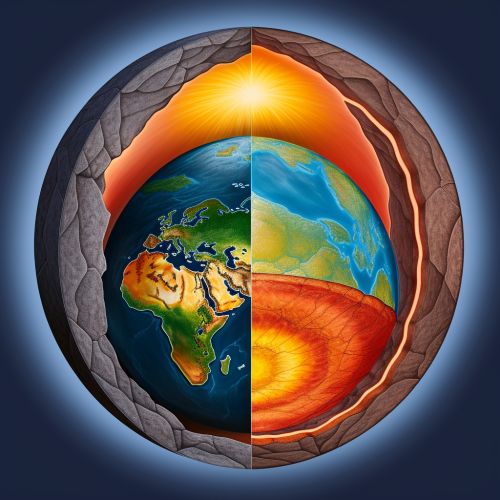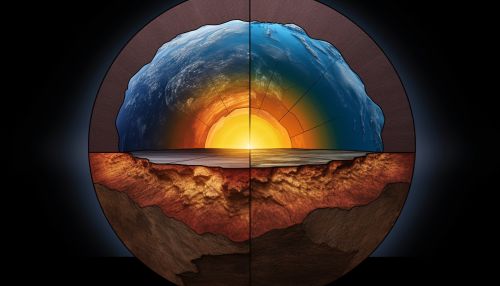The Dynamics of Earths Inner Core Rotation
Introduction
The inner core of the Earth, a solid sphere located at the center of our planet, is a subject of intense scientific study. This article delves into the dynamics of the Earth's inner core rotation, a phenomenon that has intrigued geophysicists for decades.
Structure of the Earth's Inner Core
The Earth's inner core, approximately 1,220 kilometers in diameter, is primarily composed of an iron-nickel alloy with minor amounts of other elements such as oxygen, silicon, and sulfur. The inner core is surrounded by the outer core, a layer of molten iron and nickel that extends up to the mantle.


Discovery of the Inner Core Rotation
The rotation of the Earth's inner core was first proposed by Keith Edward Bullen in 1940. However, it was not until 1996 that a team of researchers led by Xiaodong Song and Paul G. Richards provided the first observational evidence of this rotation.
Mechanics of the Inner Core Rotation
The rotation of the Earth's inner core is believed to be driven by the geodynamo, a process related to the convection of molten iron within the outer core. This convection generates the Earth's magnetic field, and the interaction between the magnetic field and the inner core results in a torque that causes the inner core to rotate.
Rate of the Inner Core Rotation
The rate of the inner core rotation is subject to ongoing research and debate. Initial estimates by Song and Richards suggested a rotation rate faster than the surface of the Earth by approximately 0.3-0.5 degrees per year. However, subsequent studies have proposed a slower rotation rate, with some suggesting that the inner core may not be rotating at all.
Implications of the Inner Core Rotation
The rotation of the Earth's inner core has significant implications for our understanding of the Earth's magnetic field and the geodynamo. It also influences seismic wave propagation, which is crucial for the study of earthquakes and the internal structure of the Earth.
Controversies and Ongoing Research
The existence and rate of the inner core rotation remain controversial topics in geophysics. Ongoing research aims to refine the observational techniques used to detect this rotation and to better understand the complex dynamics of the Earth's inner core.
Conclusion
The dynamics of the Earth's inner core rotation present a fascinating area of study, offering insights into the Earth's magnetic field, seismic activity, and the inner workings of our planet. Despite the challenges and controversies, the quest to unravel these dynamics continues to drive geophysical research.
